Click on photos to enlarge
Conditions that favor pathogen
infection and disease development |
|---|
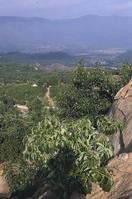
Near the top of slopes, trees can be stressed due to
less efficient irrigation, shallower (eroded) soils,
and more exposure to drying winds. Avocado black streak
and other drought stress-related maladies often occur
here.
|
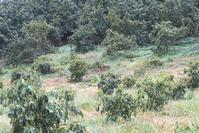
On
the bottom of slopes, trees are subject to water-logged
soil and pathogen-contaminated runoff from above. Armillaria
root rot, Phytophthora root rot, and disorders such as
root asphyxiation can be problems here.
|
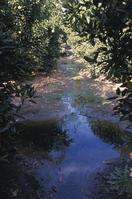
Poor drainage and water puddling beneath trees increases
root and crown diseases and disorders such as root asphyxiation
due to insufficient oxygen in soil.
|
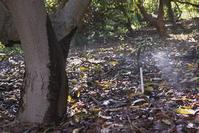
Directly wetting trunks promotes Phytophthora trunk canker and
crown rot. Watering too often or with excess amounts increases
avocado root rot. Mite outbreaks, nutritional disorders,
salt toxicity, sunburn, and reduced fruit quality and yield
are more prevalent where irrigation is inappropriate.
|
| Root and crown diseases |
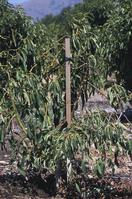
Armillaria root rot
Identification tip: Commonly causes unhealthy looking, wilted, downward-hanging foliage, leaf drop, and dieback of upper limbs. |

Armillaria root rot
Identification tip:
White, cottony fungal mycelia growing in cambial tissue, revealed by cutting under bark. |

Armillaria root rot
Identification tip: Short-lived mushrooms growing around the base of trees during the rainy fall and winter. |
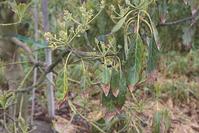
Phytophthora root rot
Identification tip: Symptoms include unusually abundant small fruit, a sparse canopy of drooping leaves with brown tips, and new shoots of small pale leaves. |
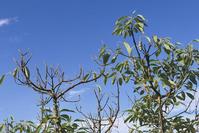
Phytophthora root rot
Identification tip: Shoot dieback and a paucity of chlorotic or pale older leaves. |
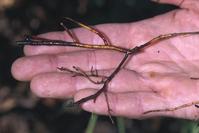
Phytophthora root rot
Identification tip: Unhealthy small rootlets turn black, are brittle and readily break when bent. Healthy rootlets flex without breaking and are pale beneath their outer layer. |
Cankers on limbs and trunks caused by pathogens |
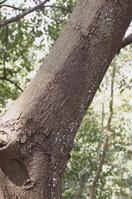
Avocado black streak
Identification tip: Dark staining, cankers on bark, and powdery white exudate, typically occurring on trees stressed by insufficient irrigation and excess salts in water.
|
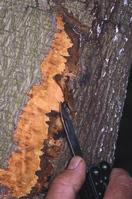
Avocado black streak
Identification tip: Infected cambium exposed by cutting under discolored bark
|
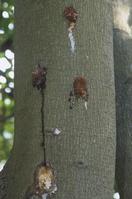
Bacterial canker
Identification tip: Liquid or pale, dry ooze, often occurring in small patches in a row on bark.
|
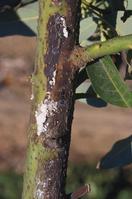
Branch canker and dieback
Identification tip: Exudate and dark discoloring on infected green bark of young trunk.
|
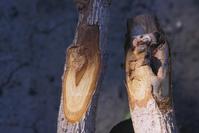
Branch canker and dieback
Identification tip: Cankered graft union from young tree killed in the field by fungal infection caused by contaminated nursery stock.
|
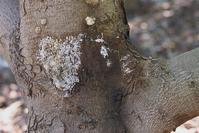
Branch canker and dieback
Identification tip: Exudate and dark discolored or oozing bark on older trees (typically occurs on bark at least several feet aboveground), unhealthy foliage, and declining or dead limbs.
|
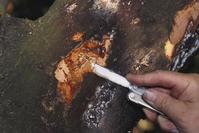
Phytophthora trunk canker and crown rot
Identification tip: black, brownish, orange, or reddish discolored cambium and wood beneath unhealthy bark.
|
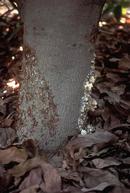
Phytophthora trunk canker and crown rot
Identification tip: Reddish brown resin and white powder on bark. Symptoms usually appear relatively low on the trunk.
|
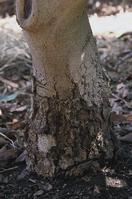
Phytophthora trunk canker and crown rot
Identification tip: Rough, cracked, dark stained flaking bark from fungal infection in cambium near the root crown.
|
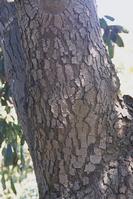
Sunblotch
Identification tip: Symptoms include discolored indentations on fruit, rectangular bark cracking or checking on limb or trunk, called alligator bark, and stunted tree growth.
|
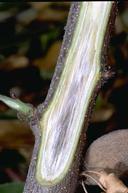
Verticillium wilt
Identification tip: Discolored, brown, grayish, or reddish streaks in wood or other tissue beneath bark indicate an unhealthy vascular system.
|
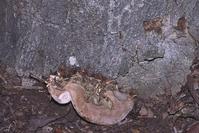
Ganoderma sp.
Identification tip: Conks (fungal fruiting bodies) on crowns, trunks, or limbs indicate wood decay.
|
Cankers on limbs and trunks, caused by abiotic disorders |
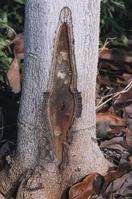
Mechanical injury
Identification tip: Old wound from chemical injection into trunk.
|
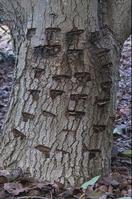
Mechanical injury
Identification tip: Hatchet cuts made before spraying chemical onto trunk bark.
|
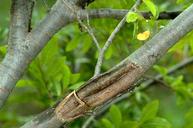
Mechanical injury
Identification tip: Old wound closing as cambial tissue grows.
|
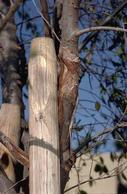
Mechanical injury from too tightly staking and tying a trunk.
|
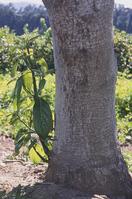
Cracked, discolored bark on trunk killed by wildland fire.
|
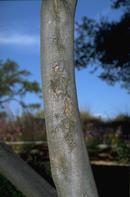
Sunburn
Identification tip: Cracked and roughened bark from heat damage to formerly shaded limb exposed to direct light after extensive pruning.
|
Cankers on limbs and trunks, caused by vertebrates |

Rabbits
Identification tip: Bark gnawed by rabbits, similar to chewing by ground squirrels and voles.
|
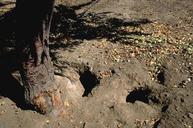
Ground squirrels
Identification tip: Girdled bark and soil burrowing from ground squirrels.
|


